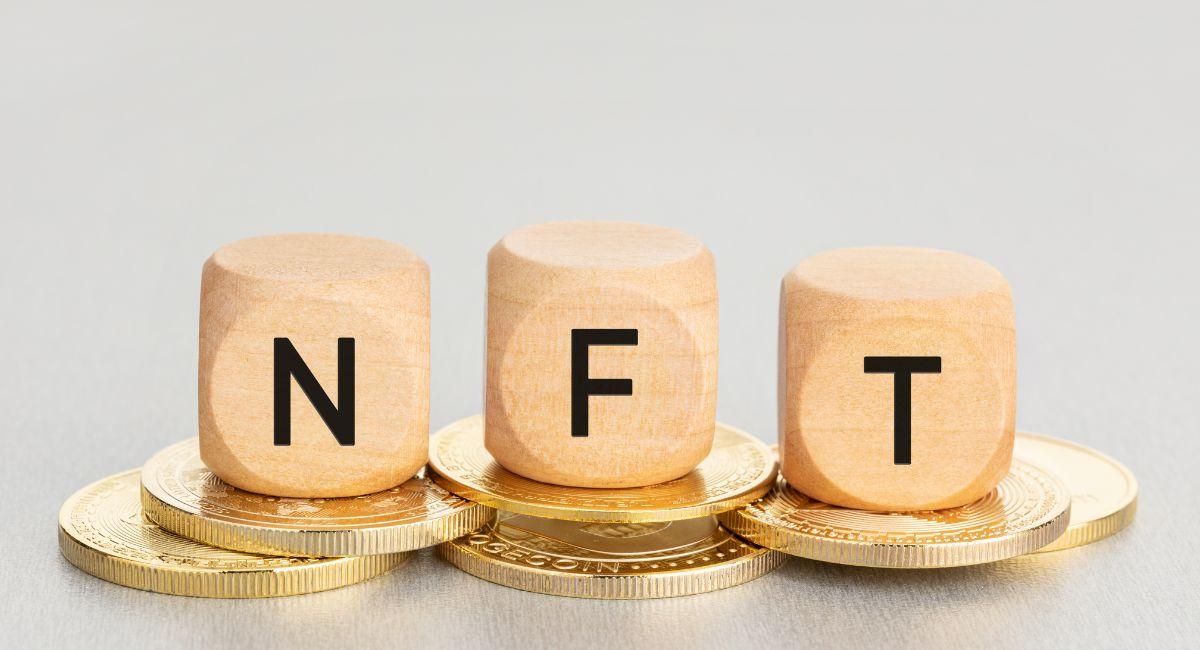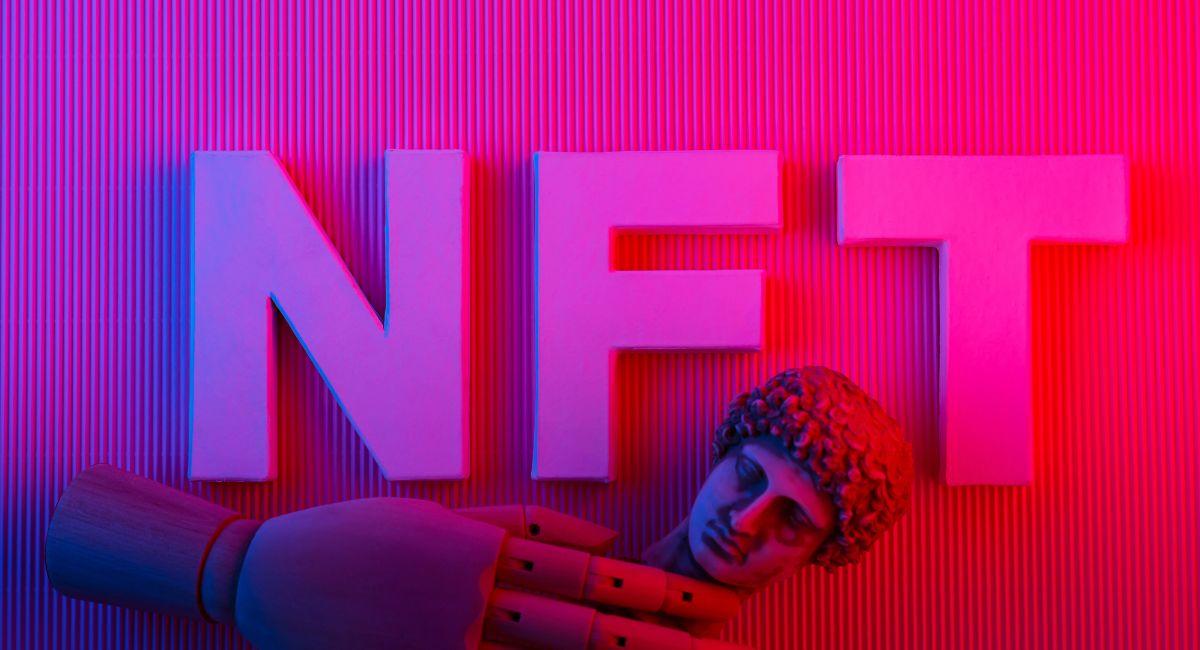Top 10 Ways NFT Bridging Is Unveiling The Path To A Seamless Tokenized World

In the ever-evolving landscape of blockchain technology and Non-Fungible Tokens (NFTs), the concept of NFT bridging emerges as a pivotal force shaping the trajectory of decentralized ecosystems. NFT bridging represents a technological innovation that aims to overcome interoperability challenges, connecting disparate blockchain networks and unlocking the potential for a seamless, interconnected tokenized future. In this comprehensive exploration, we delve into the intricacies of NFT bridging, its significance, and the transformative impact it brings to the world of digital assets.
Understanding NFT Bridging:
At its core, NFT bridging refers to the ability to transfer or use NFTs across different blockchain networks. As the popularity of NFTs soared, diverse blockchain platforms emerged, each with its unique features, consensus mechanisms, and smart contract capabilities. However, this diversity led to a fragmented NFT ecosystem, where tokens created on one blockchain often faced limitations in interacting with those on another. NFT bridging addresses this challenge by establishing a connection between disparate blockchains, allowing NFTs to move seamlessly across different networks.
How NFT Bridging Works

The advent of Non-Fungible Tokens (NFTs) brought forth a renaissance in digital ownership and creativity. Yet, the proliferation of various blockchain networks hosting NFTs led to a fragmented ecosystem, necessitating innovative solutions. Enter NFT bridging, a technological marvel designed to unravel the intricacies of interoperability. This detailed exploration demystifies the mechanics behind NFT bridging, elucidating how it seamlessly connects disparate blockchains, fostering a new era of interconnected digital assets.
**1. Understanding NFT Standards and Protocols:
Foundation of Interoperability:
The foundation for NFT bridging lies in the establishment of common standards and protocols across different blockchain networks. Standards such as ERC-721 and ERC-1155 on Ethereum, BEP-721 on Binance Smart Chain, and others serve as the baseline for token creation and interaction.
**2. Creation of NFTs on Native Blockchains:
Origination Point:
NFTs are initially created on their native blockchain platforms, adhering to the specific standards and protocols of each network. This marks the starting point for their journey within the blockchain ecosystem.
**3. Cross-Chain Bridges:
Interconnecting Networks:
The crux of NFT bridging lies in the establishment of cross-chain bridges. These bridges act as intermediaries, connecting different blockchain networks. Each bridge is equipped with the capability to recognize, validate, and facilitate the transfer of NFTs between the connected blockchains.
**4. Token Locking and Minting:
Secure Transactions:
When an NFT is prepared for transfer from its native blockchain to another, a process known as token locking takes place. Token locking involves temporarily securing the NFT on its native blockchain, ensuring the integrity of the transfer.
Simultaneously, on the destination blockchain, a corresponding process called minting occurs. Minting generates a mirrored representation of the NFT on the new blockchain, establishing a connection between the original and the duplicated tokens.
**5. Smart Contracts and Atomic Swaps:
Decentralized Execution:
Smart contracts play a pivotal role in executing NFT bridging transactions. These contracts are programmed to facilitate atomic swaps, ensuring that the transfer of tokens across blockchains is a seamless and irreversible process. Atomic swaps guarantee that either the entire transaction is executed, or none of it takes place, preventing partial or incomplete transfers.
**6. Oracles and Validation:
Ensuring Accuracy:
Oracles act as external data feeds that provide information to smart contracts. In the context of NFT bridging, oracles play a crucial role in validating transactions by confirming the lock on the native blockchain and the corresponding minting on the destination blockchain. This validation ensures the accuracy and legitimacy of the cross-chain transfer.
**7. Decentralized Custody Solutions:
Securing Assets:
To address security concerns during token locking, decentralized custody solutions come into play. These solutions provide secure storage for NFTs while they are temporarily locked on their native blockchain. Decentralized custody ensures that the assets remain safeguarded throughout the bridging process.
**8. Proof-of-Assets and Consensus Mechanisms:
Verifying Ownership:
Proof-of-assets mechanisms are employed to verify ownership of NFTs during the bridging process. Consensus mechanisms on each blockchain network validate the authenticity of ownership, ensuring that only legitimate token holders can initiate and complete the bridging transactions.
**9. Cross-Chain Communication Protocols:
Enabling Dialogue:
Cross-chain communication protocols facilitate seamless interaction between different blockchain networks. These protocols define the rules and procedures for cross-chain transactions, ensuring a standardized and interoperable communication framework.
**10. Dynamic NFT Standards:
Adapting to Diversity:
The systems often incorporate dynamic NFT standards that can adapt to the specific requirements of different blockchains. This adaptability ensures that NFTs can retain their unique characteristics and functionalities, even when traversing across diverse blockchain ecosystems.
NFT bridging is not merely a technological solution; it represents a paradigm shift in the way we perceive and interact with digital assets. As blockchain technology continues to evolve, the future of NFT holds the promise of even greater interoperability, enhanced security measures, and expanded cross-chain functionalities. The seamless movement of NFTs across blockchains fosters a more interconnected and versatile digital asset landscape, unlocking possibilities that were once confined by the limitations of isolated networks.
In conclusion, the mechanics of it paint a fascinating picture of decentralized connectivity. From the creation of tokens on native blockchains to the intricate processes of token locking, minting, and validation, each step in NFT bridging contributes to the realization of a seamless and interoperable future. As innovators and blockchain enthusiasts continue to refine and expand the capabilities of NFT bridging, its role in reshaping the landscape of digital ownership becomes increasingly prominent, paving the way for a new era of interconnected, decentralized, and boundary-defying digital assets.
Benefits of NFT bridging

1. Diversification of NFT Standards:
Adapting to Blockchain Diversity:
NFT bridging systems often incorporate dynamic NFT standards that can adapt to the specific requirements of different blockchains. This adaptability ensures that NFTs can retain their unique characteristics and functionalities, even when traversing across diverse blockchain ecosystems.
2. Future-Proofing Digital Assets:
Adapting to Technological Evolution:
NFT bridging serves as a future-proofing mechanism for digital assets. As blockchain technology continues to evolve, the interconnected nature facilitated by NFT bridging positions NFTs to adapt to emerging trends and technological advancements.
In conclusion, the benefits of NFT bridging extend far beyond the technical realm, shaping the future of digital ownership and creativity. The seamless movement of NFTs across blockchains unlocks new dimensions of interoperability, financial opportunities, and cultural exchange. NFT bridging serves as a catalyst for a borderless digital asset landscape, where the boundaries between blockchain networks are blurred, and the potential for innovation and collaboration knows no limits. As the blockchain space continues to evolve, the transformative impact of NFT bridging signifies a paradigm shift toward a more interconnected, versatile, and resilient era of decentralized digital assets.
Also, read- Top 5 Most Expensive NFTs Ever Sold Till The Year 2023
Top 10 Toeknization challenges and solutions by NFT bridging

**1. Interoperability and the Fragmented NFT Ecosystem:
Challenge:
The blockchain space is characterized by a multitude of platforms, each with its strengths and limitations. Ethereum, Binance Smart Chain, Polygon, and others have become hubs for NFT creation, resulting in a fragmented ecosystem where NFTs are confined to their respective blockchains.
NFT Bridging Solution:
It acts as a unifying force, fostering interoperability across blockchain networks. By creating bridges that facilitate communication and asset transfer between different platforms, NFT bridging addresses the challenge of fragmentation, opening doors to a more interconnected and versatile NFT landscape.
**2. Cross-Chain Compatibility:
Challenge:
NFTs created on one blockchain often face compatibility issues when attempting to interact with decentralized applications (DApps) or smart contracts on a different blockchain.
NFT Bridging Solution:
It ensures cross-chain compatibility, enabling NFTs to traverse seamlessly across various blockchains. Through interoperable standards and protocols, NFTs become agnostic to the blockchain they originate from, expanding their utility and potential applications.
**3. Enhanced Liquidity and Market Accessibility:
Challenge:
Liquidity and market accessibility have been constrained by the siloed nature of NFTs on specific blockchains, limiting the trading opportunities for collectors and investors.
NFT Bridging Solution:
NFT bridging introduces enhanced liquidity by allowing tokens to move freely between blockchains. This not only broadens the market reach for NFTs but also facilitates a more dynamic and fluid trading environment, benefiting both creators and collectors.
**4. Reducing Environmental Impact:
Challenge:
Concerns about the environmental impact of blockchain networks, particularly those using Proof-of-Work (PoW) consensus, have prompted a search for more sustainable alternatives.
NFT Bridging Solution:
It enables the movement of tokens across environmentally friendly blockchains, providing creators and users with choices that align with their values. By promoting interoperability across networks with diverse consensus mechanisms, NFT bridging contributes to a more sustainable and eco-friendly tokenized future.
**5. Decentralized Finance (DeFi) Integration:
Challenge:
Integrating NFTs with decentralized finance protocols and platforms has been hindered by the isolated nature of tokens on specific blockchains.
NFT Bridging Solution:
It paves the way for seamless integration with decentralized finance ecosystems. This enables NFTs to participate in lending, borrowing, and other DeFi activities across different blockchains, unlocking new financial opportunities for NFT holders.
**6. Cross-Platform Gaming and Virtual Realities:
Challenge:
The gaming and virtual reality industries have witnessed a surge in NFT adoption, but the isolated nature of tokens on specific blockchains restricts their potential in cross-platform gaming experiences.
NFT Bridging Solution:
NFT bridging facilitates cross-platform gaming and virtual experiences by allowing in-game assets and NFTs to transcend blockchain boundaries. This innovation enhances the immersive nature of gaming, creating a more dynamic and interconnected virtual world.
**7. Global Collaboration and Cultural Exchange:
Challenge:
Cultural and regional variations in blockchain adoption often create barriers for artists and creators to reach a global audience.
NFT Bridging Solution:
NFT bridging fosters global collaboration and cultural exchange by breaking down the barriers between blockchain networks. Artists can create, showcase, and sell their NFTs on a broader scale, promoting diversity and inclusivity in the global NFT community.
**8. Smart Contracts and Programmable NFTs:
Challenge:
The full potential of programmable NFTs, driven by smart contracts, is hindered when confined to a single blockchain with specific scripting languages and capabilities.
NFT Bridging Solution:
NFT bridging enhances the programmability of tokens by enabling them to interact with smart contracts on different blockchains. This opens avenues for creating more sophisticated and dynamic NFTs with cross-chain functionalities.
**9. Risk Mitigation and Security:
Challenge:
The security of NFTs is paramount, and the risk of vulnerabilities or attacks is heightened when tokens are confined to a single blockchain.
NFT Bridging Solution:
NFT bridging contributes to risk mitigation by diversifying the storage and transaction locations of tokens. In the event of a blockchain-specific vulnerability, NFTs can be safeguarded by moving them to more secure networks, enhancing overall security and resilience.
**10. Community Empowerment and Governance:
Challenge:
Community governance and decision-making within NFT ecosystems can be constrained by the limited scope of tokens on a single blockchain.
NFT Bridging Solution:
NFT bridging empowers communities by allowing their tokens to interact with governance protocols on multiple blockchains. This decentralization of governance enhances community participation, fostering a more inclusive and democratic ecosystem.
🚀 Exciting News from #Worm! 🌱 Our unique Compost Box NFTs are now on #Solsea. Priced at just 1 SOL, they’re your gateway to #DeFi adventures and passive income! 🔥
🌟 Be part of our first #IDO in February! 🎉 Limited NFTs, unlimited possibilities. Grab yours & join the…
— Worm Solana (@SolanaWorm) January 8, 2024
The Future Unveiled:
NFT bridging is not merely a technological solution; it represents a paradigm shift in the way we perceive and interact with digital assets. As blockchain technology continues to evolve, the future of NFT bridging holds the promise of even greater interoperability, enhanced security measures, and expanded cross-chain functionalities. The seamless movement of NFTs across blockchains fosters a more interconnected and versatile digital asset landscape, unlocking possibilities that were once confined by the limitations of isolated networks.
In conclusion, the mechanics of NFT bridging paint a fascinating picture of decentralized connectivity. From the creation of tokens on native blockchains to the intricate processes of token locking, minting, and validation, each step in NFT bridging contributes to the realization of a seamless and interoperable future. As innovators and blockchain enthusiasts continue to refine and expand the capabilities of NFT bridging, its role in reshaping the landscape of digital ownership becomes increasingly prominent, paving the way for a new era of interconnected, decentralized, and boundary-defying digital assets.




























































